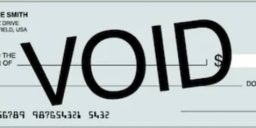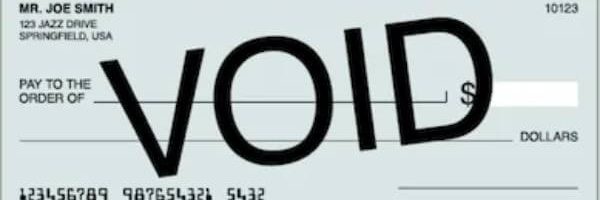Previously, I discussed the disadvantages of using physical means of payment — specifically, cheques — for paying your small business’s suppliers and vendors. In this article, I will review some electronic alternatives to cheques.
Electronic payment options for small businesses
There are quite a few options that all offer advantages over cheques.
Pre-Authorized Debit (PAD)
If you have a vendor that bills on a regular basis and you have a good business relationship, the easiest long-term option for you would be to sign a Pre-Authorized Debit (PAD) agreement. It does take some initial setup, since you need to provide them with your bank information (often with a void cheque) and they will withdraw funds when a bill is due. This can work well with a credit card company or a utility provider. Smaller providers, such as a bookkeeper, can also bill this way. There will be no charge to you, and there is no need for active involvement on your part (or your bookkeeper), since the payee initiates the withdrawal.
Credit card payments
Some of your suppliers or vendors probably accept credit card payments. This can be convenient for both parties, and in some cases the vendor might regularly auto-charge your card. There are fees on the receiving end, which means this is not a widely accepted method of payment, especially for your smaller suppliers and vendors.
Online bill payment
Some companies pay banks to include them in a list of online payees. To pay a bill, you need to first set up the payee through your online banking interface by searching for the payee and entering your account number. Then to transfer the funds you need to enter the amount. There will be no charge to you, but this option does require active involvement on your part. The payment is processed by the next business day, although it might take a few days for your payee to recognize it as received.
Interac e-Transfer
The vast majority of Canadians have heard of Interac e-Transfers. To set up a payee, you simply need to enter their email address. To send funds, you need to enter the amount and likely create a password which the payee enters as they accept the funds. Some payees have configured automatic deposit, so that they don’t have to enter a password — the funds are deposited in their account as soon as you initiate the payment.
There may be a charge to you, depending on your banking arrangement. One of my clients that uses e-Transfers pays $1.50 per payment. Other clients pay nothing, as it’s included in their banking plan. This option requires active involvement on your part. Payment is processed the same day, provided that the payee accepts the payment.
Electronic Fund Transfers (EFT)
Electronic Funds Transfers (EFTs) are a lesser known arrangement for small businesses, and are usually included in a higher tier banking plan. They’re roughly equivalent to Automatic Clearing House (ACH) payments in the USA.
An EFT requires you to know both the recipient’s bank details. You might need to request a void cheque and enter the information yourself. Then the process is similar to an Interac e-Transfer, except there is no need to create a password, and the funds are automatically deposited without requiring any acceptance on the payee’s part. This payment process does require active involvement on your part. Funds are usually transferred overnight.
You can speak to your bank to see what options are available, and the associated fees. One of my clients that uses this method pays $0.85 per transfer.
Wires and alternatives for international payments
Wires are a reliable method to send funds, especially internationally. You would need quite a bit of information, especially for international wires, such as IBAN / SWIFT numbers and the recipient’s bank address. Wires are also expensive. They can cost anywhere from $15 to $70, with additional fees on the recipient’s end, and that’s not counting any potential foreign exchange costs.
A wire is fairly quick (can be completed overnight) and does require active involvement on your part. However, if there is foreign currency exchange involved, consider using a third-party service such as Wise (formerly TransferWise) or OFX, where you can save a significant amount not just on the wire transfer fee, but also on the foreign exchange fee and spread.
What to consider when evaluating the options
The electronic options above are all quite reliable and are less prone to fraud and error as compared to cheques. As long as you enter all information correctly, the recipient will receive the funds relatively quickly. You also have more control over the process, since you don’t need anyone to print cheques and mail them.
There are still limitations and other factors to consider when evaluating your electronic payment options. As well, your suppliers or vendors might all prefer different methods of payment. Sadly, there is no silver bullet in comparison to cheques.
Dollar limits
Online bill payments, Interac e-Transfers, and EFTs can all be subject to bank limits. I have some clients who have a daily $3,000 maximum for cash outflows. Maximums can often be increased if you speak with your bank.
Domestic vs. international
Your payment method may be limited only to domestic transactions, whereas you’d have to use a different method for international payments.
Data entry and detail
Do you have a lot of time for manual administrative work? You have to make sure all information such as email addresses and bank account numbers are entered correctly. And each time you process a payment you have to enter it yourself, unless you allow a bookkeeper or assistant full access to the bank account, which brings us to the next consideration.
Tiers of approval
Not all business owners want to give employees full access to the company’s online bank account. A lot of business owners continue using physical cheques simply because it allows a segregation of duties: a bookkeeper prepares cheques and does all the admin work, the owner signs, and the bookkeeper then mails the cheques. The above electronic payment options do not generally allow for tiers of approval, except in cases of specialized banking arrangements (for a fee, of course).
Troubleshooting on the payee’s side
Most people want to receive money, right? Well, I would answer “yes”, but not everyone is so good at actually getting this accomplished. Take an Interac e-Transfer for example: some of my clients (and their vendors) routinely neglect to check their emails, or maybe the email goes to spam, or maybe they gave the wrong email address to begin with. I’m not saying they are all scatterbrained. It’s just that not everyone is particularly detail oriented and maybe they are too busy to look at some things.
Now, you can say that if a payee misses a payment email, or deposits it but forgets about it, it’s fully their problem. I agree. But how much time do you want to spend resolving disputes and checking old emails to prove your innocence?
Inability to auto-schedule or defer
Unlike a post-dated cheque, not all of the above methods allow you to schedule multiple payments in advance or defer a payment to a later date. This means you can sometimes only process payment when you are available.
Time and cost
The transfer of funds itself, when fully electronic, should not be costly. However, some are more costly than others, and cost is almost measured in terms of your time.
Record keeping
Every business owner needs accurate reports to know how the company is doing. For example, what are the remaining unpaid bills and when are they due? Let’s say you had a change of staff or you got super busy and now you’re behind on your bookkeeping. How will you sort out who was paid and when and for what? You may have to spend time checking old bank statements and sorting through old emails.
It’s clear that for even a moderate transaction volume, the above electronic payment options may not give you a useful “paper trail”.
And what about updating the actual books? Well, you need to manually mark each bill as paid on the proper date. There is definitely an administrative burden.
Is there still a better way?
When it comes to these payment options, like most things in life, there are pros and cons. It can be tricky to manage multiple payment options while managing your small business as well, nevermind the challenges in receiving payments from your clients!
In my next article, I will review two payment systems available in Canada and that I’ve used, Plooto and RBC PayEdge (formerly WayPay), which attempt to address some of the challenges with electronic payments.
About the author
I am a Chartered Professional Accountant working somewhere in Canada. I provide controllership, training, and consulting services to small and medium sized businesses. I also work with non-profit organizations. I write only about my experiences in the business world and I am not selling or advertising any company or service, including my own. Audrey Silva is my pen name.















